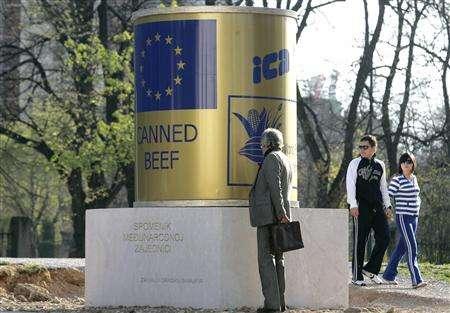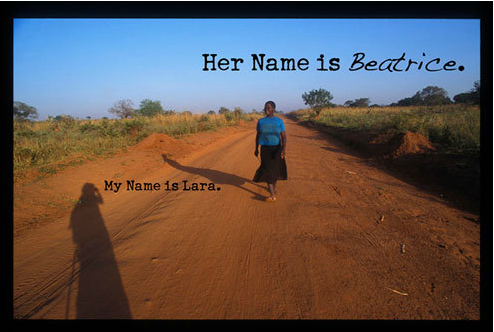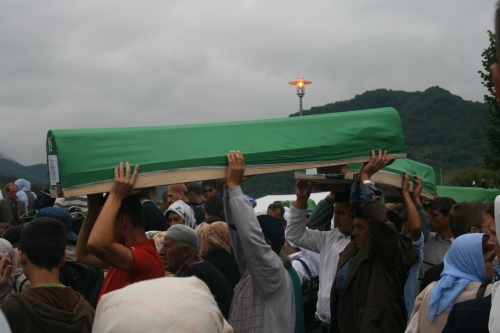Alternative Rememberings
“Monument to the International Community” from the “Grateful Citizens of Sarajevo.” Image taken from Reuters.
On Thursday, we’ll continue our conversation on commemoration by considering alternative forms of remembering as practiced by individuals and community-based organizations (CBOs) during and in the aftermath of mass atrocities. Erin Baines and Pilar Riaño-Alcalá’s article “The Archive in the Witness: Documentation in Settings of Chronic Insecurity” compares strategies used by individuals and CBOs in northern Uganda and Colombia to create and maintain a “living archive” of war and related subjects (p. 412). Next, Anna Sheftel’s piece “‘Monument to the international community, from the grateful citizens of Sarajevo'” examines dark humor as a form of “counter-memory” (p. 145) that is used by Bosnian artists, activists and civilians to resist official narratives of the Bosnian War from 1992 to 1995.
Together, these articles present some alternatives to the commemorative strategies typically privileged as part of the transitional justice toolkit, such as international criminal tribunals and other formal legal institutions, truth and reconciliation commissions, and memorial sites and events. But where do the strengths of these approaches come from? And how well might the proposed models then be applied to other post-conflict settings?
Finally, one of your classmates is working on an online project for her course on Ethical Witnessing. If you have time, please consider visiting her blog / website Are You Idling? and sharing your thoughts on Idle No More, First Nations rights, and related issues of (neo)colonialism, racism and sexism.





